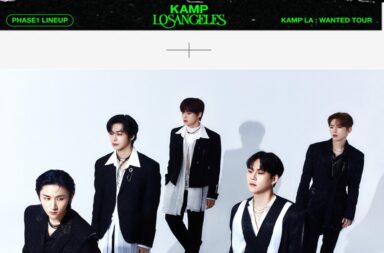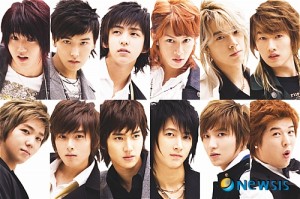
Super Junior, celebrates its fifteenth anniversary this month. It’s surreal to think of this time in 2005 when SuJu was just a dozen fresh-faced young men, performing for the first time on South Korean television. Now, they’re seasoned veterans in Korean entertainment – all the while still releasing hit songs.
While celebrating SuJu’s ongoing success, I have also wondered about their former members. The original “face” and maknae of Super Junior, Kim Ki-Bum comes to mind. Ki-Bum quit promoting as an active member in 2009, just as SuJu spearheaded a global dance craze with Sorry, Sorry. A move like that, in hindsight, seems unthinkable.
Luckily for the fans, Ki-Bum has forayed into YouTube. This arguably marks his first regular (and frequent) media appearances in over eleven years.
Now in his early 30s, Ki-Bum’s YouTube channel Yangban Kim Ki Bum gives long-time E.L.F. a sense of relief and maybe even closure. The former idol greets his fans in his first vlog with a new image: shoulder-length locks and facial scruff. This is practically the world-wide “stay at home” uniform. True to his idol past, Ki-Bum makes this look deliberate and fashionable. Image change aside, we still can see the same bright-eyed, smiling Ki-Bum of the late ‘00s.
Ki-Bum has worked on various projects during his eleven-year absence from SuJu, but his career has been quiet compared to the current active members of Super Junior. However, Ki-Bum may have a full-scale career revival. A combination of history, relatability, timing, and priorities may help poise Ki-Bum for future success and a return to prominence – both in South Korea and further afield.
To make the case for Ki-Bum’s comeback, we could start with his career beginnings:

Like many of today’s current K-pop artists, Super Junior debuted amidst high anticipation from fans. Several SuJu members were recognized as popular trainees under SM Entertainment, but it was Ki-Bum who originally led the charge for group promotions. Ki-Bum had already made his solo debut in entertainment in 2004 as an actor in the drama April Kiss, and even co-starred with future bandmate Kim Heechul in sitcom Rainbow Romance and drama Banolim 2 in 2005. As a newly-minted idol rapper, the then-18-year-old Ki-Bum was a solid choice as Super Junior’s “face.”
As a fan, Ki-Bum was one of the members who initially stood out the most. I was first introduced to Ki-Bum through the 2005 reality show Super Junior Full House, which featured SuJu doing a homestay program to learn English. Ki-Bum had returned to his native Seoul after years of living in the United States, so he was SuJu’s resident English-speaker. Much like Chinese bandmate Han Geng, Ki-Bum’s presence created a bridge between two different cultures.
Ki-Bum’s work ethic is also part of his appeal. In a sense, Kim Ki-Bum embodied a certain hope for the Everyman (or the Everywoman): He was not a vocal powerhouse like Yesung, or a dancing virtuoso like Han Geng and Eunhyuk. However, he still debuted through hard work – and with a little bit of luck on his side. His success gives hope that having a passion and a goal could serve someone well, even if that means developing talent rather than being born with it.
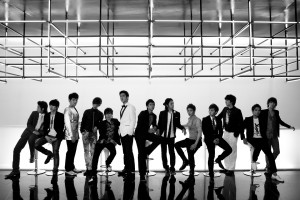
Steadily, Super Junior became internationally known. By the time they released Sorry, Sorry in 2009, they had already a gained a member, formed different subgroups, and headlined their first major tour. That March was one of my favorite times as a SuJu fan, since I watched the group continue to cross language and cultural barriers with their music.
After his departure, Ki-Bum continued to hone his acting skills. He continued to act in television, movies, and even a stage play. In 2018, Ki-Bum signed to Clover Company as an actor and appeared in the SBS Plus program Bipedal Life, where he revisited his childhood home and his former agency. Despite receiving positive feedback, Ki-Bum seldom appeared in the media.
While reflecting on the current Super Junior members’ success, I couldn’t help asking, “Why isn’t Ki-Bum’s name out there as an actor like some of his former bandmates’?” We have seen Donghae nab television roles. Ryeowook and Kyuhyun have landed musical theater roles. Former member Han Geng returned to his native China and kicked-off solo acting and singing careers. Fellow “visual” Siwon is not only an actor but a sought-after brand ambassador and a UNICEF ambassador.
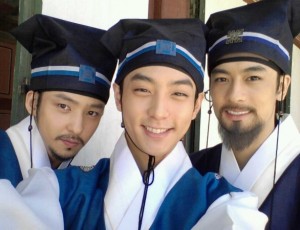
From an outsider’s perspective, Ki-Bum clearly had the potential, as well as the resources at SM Entertainment to nurture his potential. When looking at SM’s other idol groups with members with similar positions, we have seen fellow “visual” members get promoted and succeed independently from their groups. One example is Girls’ Generation’s YoonA, who went from starring in SuJu’s own “U” music video as a trainee to securing product endorsements and transitioning into a successful acting career. Choi Minho, SHINee’s visual and idol-rapper, headlined a drama early in his idol career. More remarkably, he released a solo single – as a singer.
While talent is always a great asset to have as an entertainer, positive relationships with colleagues – and with the general public – can’t be overlooked.
Among SM Entertainment’s boybands, Ki-Bum is an unusual case of an ex-member still having public amicable ties with his former group and agency. SM has seen a handful of high-profile departures, which seemed to dash all hopes for full-group reunions. Many of these cases involved lawsuits or nullifying contracts. However, Ki-Bum stayed with his agency for the duration of his contract, which may help explain why he remains cordial with Super Junior and SM to this day. This move also might have made it less challenging to pursue a new contract within South Korea.
Ki-Bum has also avoided major controversies during and after his SuJu days, which likely helped. By comparison, ex-bandmate Sungmin is still blocked from promoting as a SuJu member by a small but vocal group of E.L.F. Ex-SuJu member Kangin has also had several run-ins with the law. Fans may disagree about which hiatuses were fair, in hindsight. However, it is safe to say that Ki-Bum went without any major public backlash by the time his contract with SM ended in 2015.
Fast-forward to mid-2020, when the world is months-deep into the coronavirus pandemic. Virtually all industries seemed to change overnight. K-pop was no exception to the pandemic’s aftermath: tours were cancelled, and many planned projects were either canceled or indefinitely postponed.
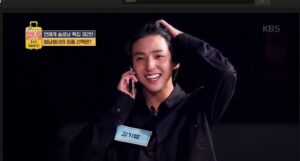
Ki-Bum’s career plateau might have been the result of unfortunate timing in 2009, but these unusual times may be a positive reset point for the former idol. At the writing of this article, Yangban Kim Ki Bum has amassed 1.9 million views since its July 2020 debut.
There has also been a tendency for “retro” celebrity comebacks, which opens the door for Ki-Bum. 1990s nostalgia has been a trend for many years in fashion and pop culture, and early 2000s nostalgia may be next for K-pop. We have seen the surprise return of 1990s Korean-American K-pop star Yang Joon-il, who was ahead of his time in terms of musical style and fashion. Since Ki-Bum leans more to acting than music, he may take some inspiration from other former ‘00s teen pop stars: American singers Mandy Moore and Naturi Naughton now have successful second careers as television drama actors.
Finally, it’s worth noting Ki-Bum’s current priorities. Ki-Bum’s candor and grace have taken the lead in his new vlog. For now, Ki-Bum has chosen to focus on YouTube, and his channel has mostly kept things light. Yangban Kim Ki Bum follows popular trends, such as mukbang vlogs and sharing his skincare routine. Ki-Bum also shares memories of his life in America, his relationship with his immediate family, as well as the mundane parts of “adulting” as a newly-minted K-pop idol.
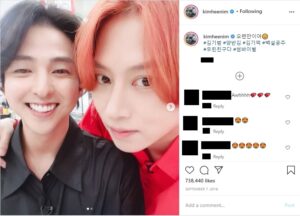
Ki-Bum’s friendship with Heechul deserves a special mention. Their friendship is remarkable among idols and even non-celebrities. Ki-Bum and Heechul have taken different paths in their careers, but they continue to cheer each other on throughout different hardships and successes. Heechul’s influence on Ki-Bum is quite apparent on Yangban Kim Ki Bum, too: Heechul is occasionally mentioned in the vlog, and he is credited for encouraging Ki-Bum to start his YouTube channel in the first place. (Ki-Bum originally declined.) Even the channel’s name is a nod to Heechul: Yangban, or “nobleman,” is Heechul’s nickname for Ki-Bum.
As Ki-Bum embraces this new part of his journey as a celebrity, he is aware of his position. Although he has been quiet by Super Junior standards, Ki-Bum is just taking things in, one step at a time. Ki-Bum ends one of his videos with advice for his younger self (and for his fans): to enjoy life, and to enjoy it at that very moment.
Even when reading a fan’s question about his immediate wish or goal, Ki-Bum has stayed mum on his future entertainment plans. Instead, Ki-Bum just replies matter-of-factly, “I want this virus [COVID-19] to be gone.”
So do we, Ki-Bum. So do we…
While we wait for that day, I’ll continue to cheer on Ki-Bum and the rest of the SuJu family.
This guest post is written by M. Hannah, a former performing artist, who counts Super Junior and SHINee among her favorite K-pop acts. In her spare time, she can be found with friends, picking up a new hobby, or reading a gripping novel. Miss Hannah also enjoys stories of people achieving the impossible.
(YouTube, Korea Times [1][2][3], Naver, Newsen, People [1][2], Variety, Yahoo! News Malaysia, Yangban Kim Ki Bum YouTube Channel [1][2][3]. Images via Clover Company Instagram, Kim Ki-Bum’s Instagram, Kim Heechul’s Instagram, SM Entertainment.)
